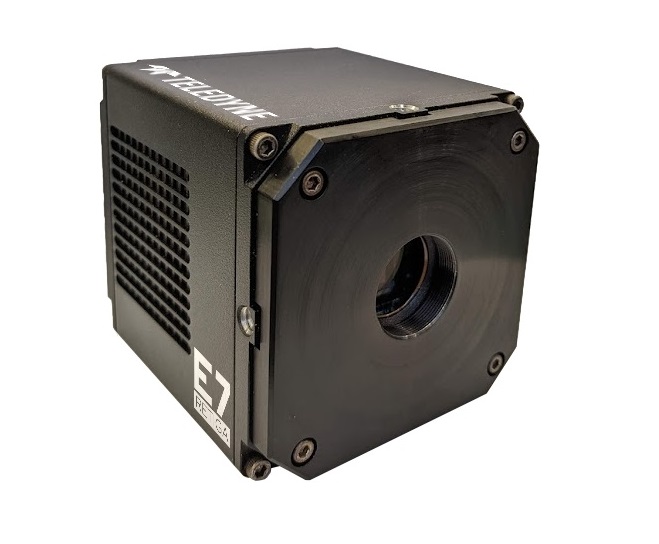Tucson, Arizona, USA, January 18, 2022 – Teledyne Photometrics, a division of Teledyne Technologies [NYSE: TDY], announces the release of the Retiga E7—a cost efficient, long exposure optimized CMOS camera boasting low read noise and unprecedented dark current control.
The Retiga E7 is a major breakthrough in CMOS thermal noise control for applications that require exposure times stretching from seconds to minutes. Cost efficient cameras that can capture weak signals using long exposures are the foundation of many areas of scientific research, including PCR and protein analysis. Teledyne Photometrics is happy to continue to provide a solution that secures the future of these techniques.
“The Retiga E7 addresses an urgent issue faced by systems manufacturers in various industries who rely on the low dark current characteristics of CCD devices, many of which will soon be phased out,” notes Joe Deasy, Marketing Manager at Teledyne Photometrics.
The Retiga E7 is a 7 Megapixel CMOS camera with low read noise (2.2 electrons) and ultra-low dark current (0.02 electrons per second) that is comfortably able to detect weak signals while integrating over several minutes. The Retiga E7 is the next generation of long exposure camera, following the highly successful CCD-based Retiga R-series.
About Teledyne Photometrics:
Teledyne Photometrics, a part of Teledyne’s Vision Solutions Group, manufactures industry leading scientific CMOS and CCD cameras used in Life Science research. With more than 40 years of experience, Teledyne Photometrics has established itself as a trusted provider of high-quality imaging devices, serving multiple industries.













